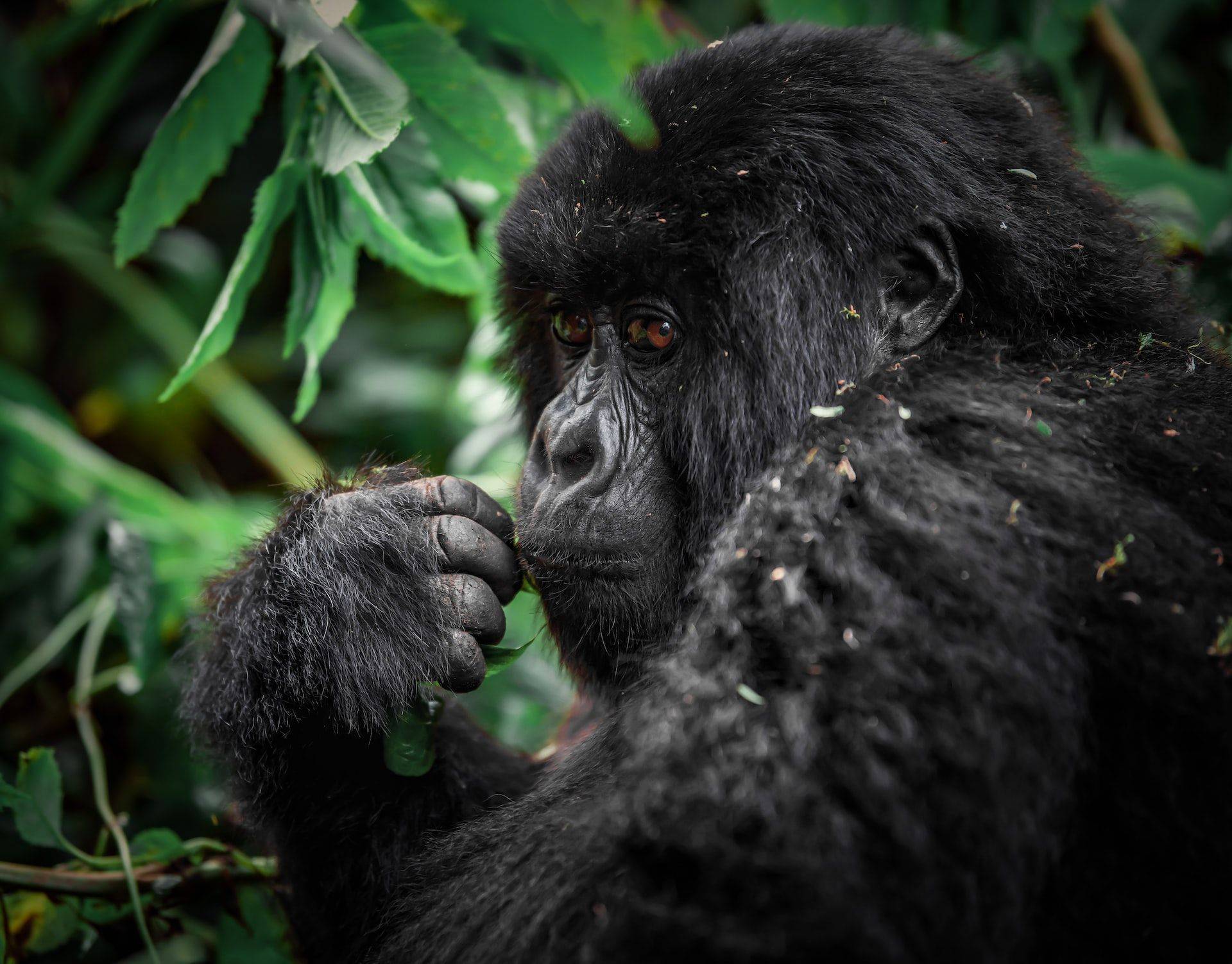Gorilla Safaris in Africa: Where To Go To See Each Gorilla Subspecies
There’s nothing quite like a gorilla safari in Africa. Though some zoos around the world do have these incredible creatures, a gorilla safari is something entirely different.
Instead of seeing them in an unnatural environment, you get the opportunity to spend a brief moment with them in their home and natural habitat. You’ll be in close proximity to these incredibly human-like creatures, get to watch how they play, eat, communicate, and sometimes, flirt!
It can be a truly once-in-a-lifetime experience, which is why we like to make sure our guests know ahead of time a little bit more about the gorillas they’re going to see.
First – there isn’t just one kind of gorilla! There are two species and four gorilla subspecies. Today we’re going to do a brief breakdown of each, including the countries where you can find them, so you get the most out of your next gorilla safari in Africa.
Types of Gorillas For Your Gorilla Safari in Africa
There are two main types of gorillas in Africa: the Eastern gorilla and the Western gorilla. Let’s learn a bit more about each.
The Western Gorilla
This is the most abundant species of gorilla in Africa. In terms of differences from their Eastern gorilla counterparts, they tend to have a lighter color and a slightly different nose structure.
As we’ll see below, the subspecies of Western gorillas – the Cross River gorilla and the Western lowland gorilla – have even more individual characteristics.
Western gorilla populations are found in the following countries:
- Cameroon
- Central African Republic
- Democratic Republic of Congo
- Equatorial Guinea
- Gabon
- Republic of Congo
Because they tend to be found in dense, remote African rainforests, it’s difficult to know the exact number that exist.
The Eastern Gorilla
There are also two Eastern gorilla subspecies, the mountain gorilla and the Eastern lowland gorilla, which is also more commonly called the Grauer’s gorilla.
These are the largest species of apes, and they inhabit Uganda, Rwanda and the Democratic Republic of Congo.
4 Gorilla Subspecies
Western lowland gorillas (G. gorilla gorilla)
The Western lowland gorilla can be found living in lowland forests of central and west Africa.
As mentioned, it’s difficult to get an accurate number, but it’s said there are around 350,000 still in the wild.
If you have seen a gorilla in a zoo, it’s likely been a Western lowland gorilla.
Common threats to the Western lowland gorilla include the Ebola virus (which reduced their population by about 30% in 2003), and human activity.
Cross River Gorillas (G. gorilla diehli)
The Cross River Gorilla lives in a stretch of forest mountains between Cameroon and Nigeria.
Of all the gorilla species, this is the most threatened. It is believed that there are less than 350 individuals still in the wild.
Their vulnerability comes from the fact that they live in a small area and have more frequent contact with humans, which has been connected with habitat loss and poaching.
Because of this sensitivity, gorilla tracking for Cross River gorillas is not possible.
Eastern Lowland gorilla / The Grauer’s gorilla (G. beringei graueri)
These gorillas are found along the eastern side of the Democratic Republic of Congo.
It is the largest of the four gorilla subspecies, and has a stockier body, larger hands, and shorter muzzle.
In comparison to the others, the Grauer’s gorilla has about 7,500 individuals left in the wild.
Mountain Gorillas (G. beringei beringei)
This gorilla species lives in forests at higher elevations and on the slopes of mountains.
Known for their thicker, longer fur, they can only be seen in the wild. They are the second most endangered species of the four. Read more of our mountain gorilla facts here!
At the last count, there were just over 1,000 mountain gorillas left in the wild.
How The Four Gorilla Subspecies Compare in Size
Western Gorilla (Gorilla gorilla)
The Western Gorilla is the largest of the four gorilla subspecies. Adult males can weigh up to 220 kilograms (485 pounds) and stand up to 1.8 meters (5 feet 11 inches) tall. Adult females are smaller, weighing up to 100 kilograms (220 pounds) and standing up to 1.5 meters (4 feet 11 inches) tall.
Mountain Gorilla (Gorilla beringei beringei)
The Mountain Gorilla is the second-largest gorilla subspecies. Adult males can weigh up to 200 kilograms (440 pounds) and stand up to 1.8 meters (5 feet 11 inches) tall. Adult females weigh up to 100 kilograms (220 pounds) and stand up to 1.5 meters (4 feet 11 inches) tall.
Eastern Lowland Gorilla (Gorilla beringei graueri)
The Eastern Lowland Gorilla is the largest subspecies of the Eastern Gorilla. Adult males can weigh up to 250 kilograms (550 pounds) and stand up to 1.8 meters (5 feet 11 inches) tall.
Adult females weigh up to 110 kilograms (240 pounds) and stand up to 1.5 meters (4 feet 11 inches) tall.
Cross River Gorilla (Gorilla gorilla diehli)
The Cross River Gorilla is the smallest of the four gorilla subspecies. Adult males can weigh up to 160 kilograms (350 pounds) and stand up to 1.6 meters (5 feet 3 inches) tall. Adult females weigh up to 80 kilograms (180 pounds) and stand up to 1.3 meters (4 feet 3 inches) tall.
Mountain Gorilla Tracking in Uganda with Kikooko Africa Safaris
When you’re ready to plan your gorilla safaris in Africa, Kikooko Africa Safaris is here to help. As East Africa safari specialists, we can help organize your Uganda gorilla tracking or Rwanda gorilla tracking experience.
Contact Kikooko Africa Safaris today to start planning your dream safari in East Africa.




